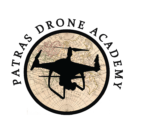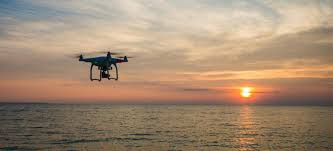Η συνύπαρξη της τεχνολογίας drone με το υγρό στοιχείο της θάλασσας ανοίγει έναν εντελώς νέο κόσμο εφαρμογών και ευκαιριών. Από την επιτήρηση ακτών μέχρι την κινηματογράφηση σε συνθήκες θαλάσσιου αέρα, οι πτήσεις πάνω από θάλασσα έχουν τις δικές τους προκλήσεις, απαιτούν εξειδικευμένες γνώσεις και προσφέρουν μοναδικά αποτελέσματα άλλα και προκλήσεις καθώς η απροσεξία εδώ έχει δυσάρεστα αποτελέσματα.
Drone flights at sea are ideal for:
- Lifesaving missions with thermal cameras and the possibility of dropping life-saving equipment
- Monitoring of coastlines or marine protected areas (e.g. NATURA sites)
- Detection of pollution, oil spills or illegal fishing, even in hard-to-reach areas
- Control and supervision in ports and their warehouses
- Water sports photography/videography
- Tourist promotion of beaches, hotel facilities and seaside resorts
- Scientific observation of marine mammals, currents and shipping
- Control and surveillance in cages from fish farms
Flying over a marine environment has special technical requirements:
- Humidity & saltiness: Their corrosive nature ( sea breeze ) can adversely affect motors and circuits. Their corrosive environment can cause damage to the engines and their fluids.
- Strong winds & turbulence: Selection of drones with high stabilization, obstacle sensing system and programmed return path (FailSafe/RTH).
- Signal reflection and visual error: use equipment with good GPS/IMU protection and high brightness displays.
- Emergency take-offs from vessels: Manual take-off/landing skills and safe return zone planning are required.
- RTH we never take off from the point because of the possibility of being in the sea.
Useful resources tips from from Patras Drone Academy
- Lower the camera to 35-45 degrees so that the sun does not burn the shot.
- Use of ND & Polarizer filters for better visualization of the seascape and reduction of reflections.
- Record in high resolution (4K+) to preserve details even in long shots.
- Flying with two people (pilot & observer) for maximum safety and control.
- I don’t take off close to the coastline because if I press the RTH I might be in the sea.
- Storage of mission settings so that they can be easily repeated in subsequent downloads (waypoints).
Patras Drone Academy offers:
- Specialized seminars on flying in marine environments, with emphasis on wind, low visibility and departure conditions.
- Practical training in real-life scenarios, on beaches and marinas in the region.
- STS-01 & STS-02 training with special reference to zones near ports or protected areas.
- Workshops with professional videographers, photographers and tourism promotion agencies.
New professional fields opening up
The specialization in maritime drone flights opens up professional horizons in:
- Tourist content providers
- Nautical videographers & marine surveyors
- Environmental monitoring companies and NGOs
- Port & beach security services
Conclusion
Flying over the sea is one of the most fascinating and technically demanding fields for a professional drone pilot. It requires knowledge, experience and continuous training. With the right guidance and preparation, it offers images and data of inestimable value.
📍 Patras Drone Academy – Knowledge takes off, even over waves! 📧 info@patrasdroneacademy.eu 🌐 www.patrasdroneacademy.gr 📸 Facebook: @patrasdroneacademy Instagram: patras_drone_academy Tik-Tok :@patrasdroneacademy

